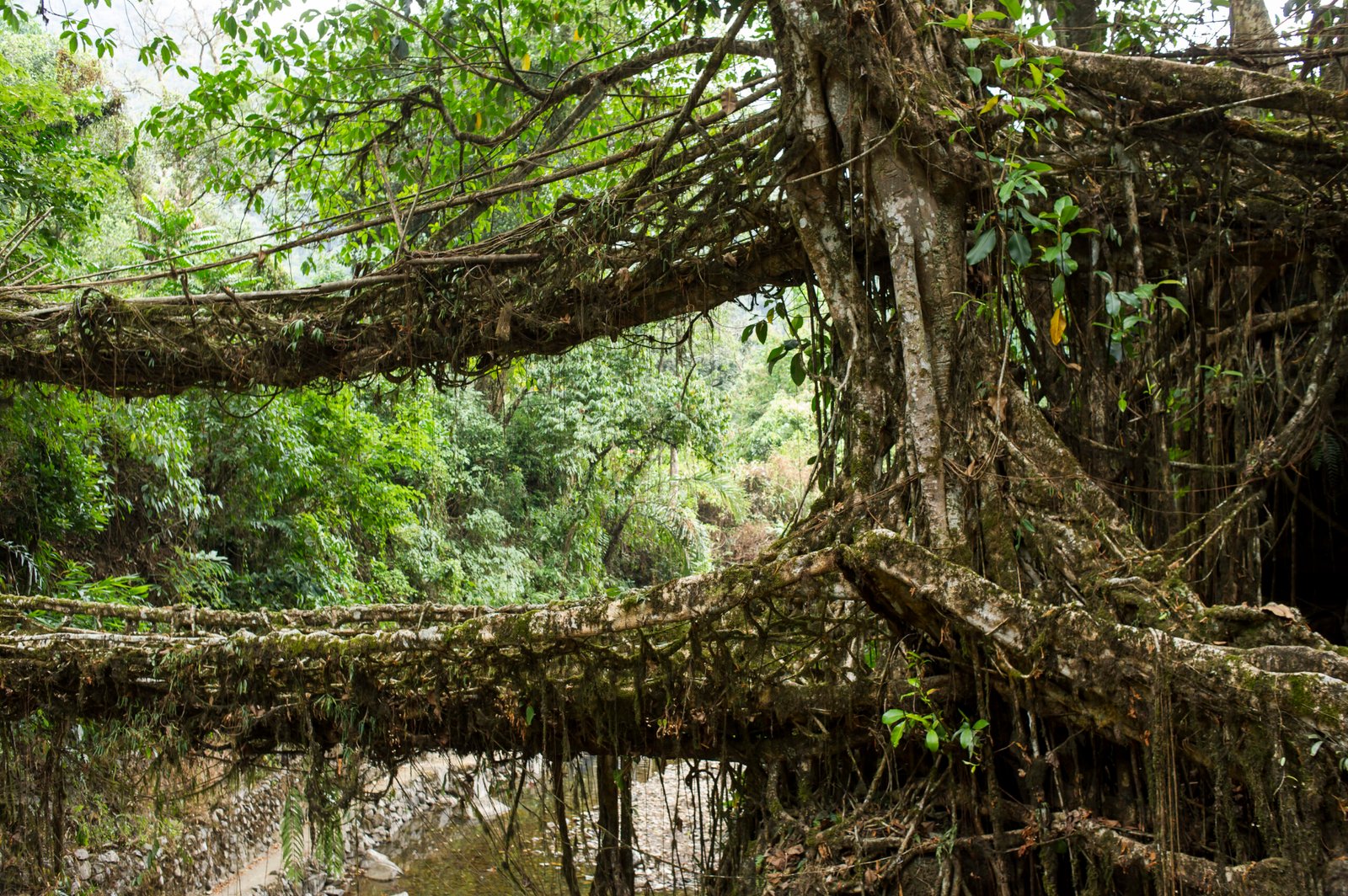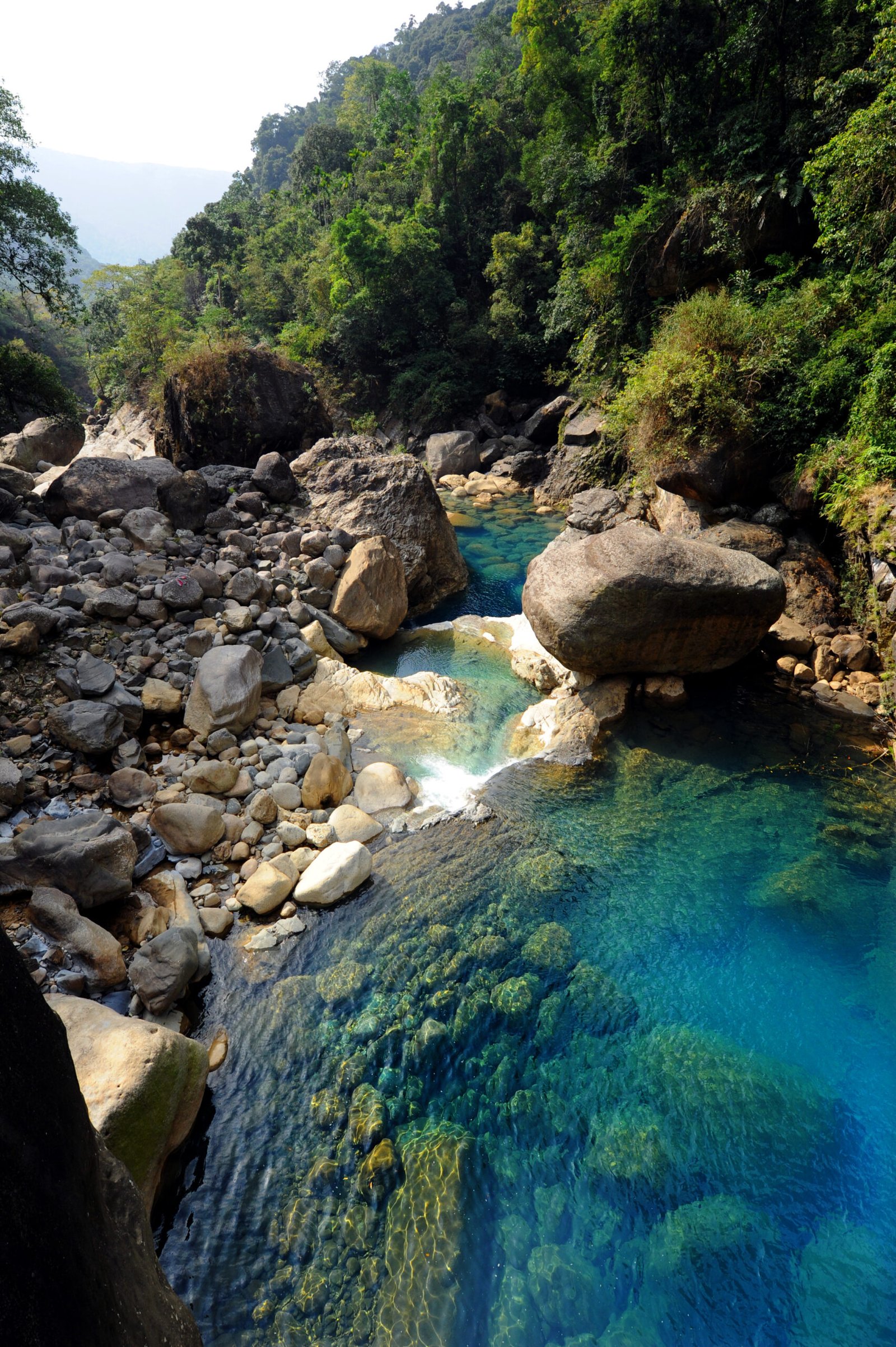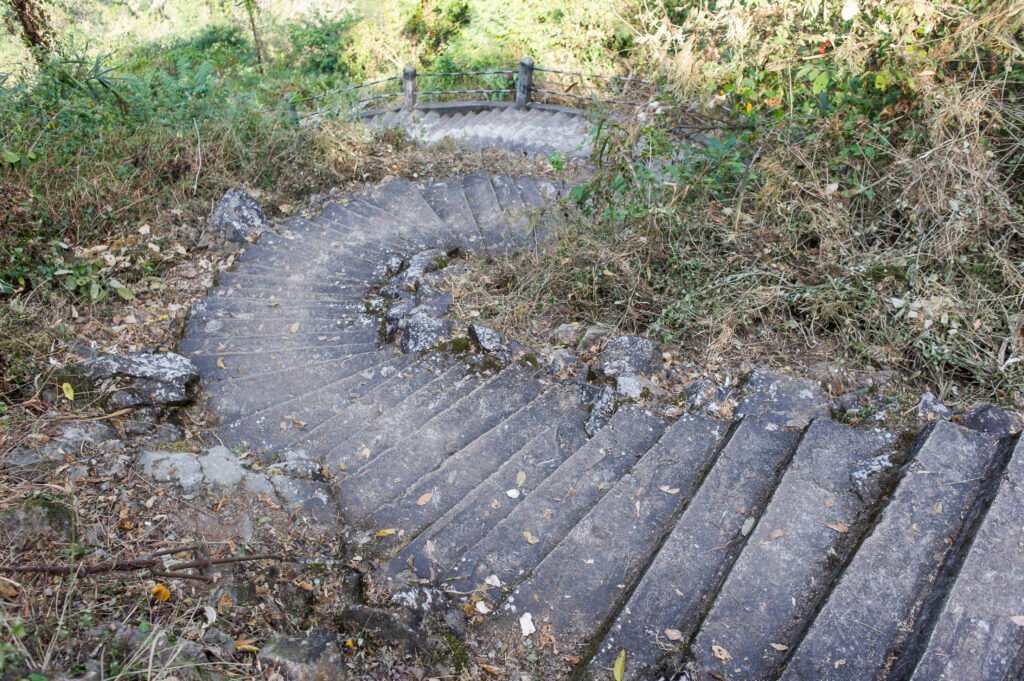Trek to the Living Root Bridges of Meghalaya
A common question coming from those who visit Meghalaya is how to get to the Double Decker living root bridges! The one of a kind attraction is one of the most visited places in Meghalaya and not to be missed out in any case. So how do you get there?
The Double Deck Living Root Bridges are located in a tiny village called Nongriat in the East Khasi hills. But you can’t drive there are the bridges are located deep down in the jungles with no road. Instead, you will first have to drive down to a place called Tyrna Village located 65 kilometers from Shillong, and from there onwards the trek begins. The trek isn’t easy; it takes you down 3,000 steps each way! It is recommended that you hike down early in the morning so that you have enough time to go down, explore the living root bridges and make the arduous climb up the 3,000 steps before it gets dark.
Get a good walking stick and begin the climb down to the village. The first part of the trek trail has steep stairs that have railings. The narrow stairway has the hill on the left and gorgeous views of the jungles on the right. It will take you an hour or so to get to the Nongthymmai village where you should be able to find refreshments right next to the stairway. There are plenty of small outlets selling water, snacks, and interesting curios to divert your attention from all the stairs you will need to climb. The route isn’t just for tourists – it is also used by the locals for their daily commute. You will see locals ferrying ration, carrying livestock, and some taking their bicycles through the steps as well!
The best part, some say, of the trek isn’t always the Living Root Bridges. Some trekking enthusiasts love the two-wire mesh suspension bridges on the way. Through these suspension bridges, you will get to cross-sections of a rivulet with amazing jaded water! They make for a lovely Instagram post – rickety bridges with clear blue skies behind them and pristine jade waters underneath! At the first bridge, there is a small path going down to the crystal-clear water and if it’s not too cold, you can always take a quick dip. You probably won’t see any water body in India that looks as pristine and jaded as these ones! Frolicking in these waters is a childlike experience that most people tend to enjoy! If you don’t get to swim while going down, you can always do so on your way up, especially if it’s a hot day and you are sweating!
Crossing the suspension bridges is an adventure in itself. It’s so hard to keep your eyes off the breathtaking landscape that you can easily miss a step and send the bridge swinging. Two-way pedestrian traffic can’t be accommodated on the bridge so if someone is crossing, you will have to wait your turn. After crossing the suspension bridges, you will need to trek for another 30-45 minutes before you reach Nongriat village. The trek takes about 2 hours to complete. From the village, you will be required to purchase an entry ticket to see the Living Root Bridges.
Now here comes the best part – there isn’t just one bridge! Apart from the famous Double Decker Living Root bridge, there are other living bridges as well. Untouched lush green jungles that house these bridges look straight out of a fairy tale and you need to take your time in appreciating the sights around you. If your feet are tired, sit by the water and dip your feet in the water. You will then experience a natural fish spa as the tiny fish in the waters nibble away at your feet! You can spend as much time as you want near the living root bridges but do keep at least 3-4 hours for the journey up to Tyrna village. Climbing the 3,000 steps is now going to be more challenging and you will need plenty of breaks along the way. On the way, you can also trek to Rainbow Falls, but that will add 2 more hours to your trekking time. So, plan accordingly.
The Double Decker Living Root Bridge Trek in Meghalaya is one adventure activity you shouldn’t miss out on. It’s not an easy feat and all preparations need to be done before the trek. Carry plenty of water, energy bars, walking sticks, and hats for your trek. Hire a local guide to get the best experience as they will be able to take you to the best spots!













